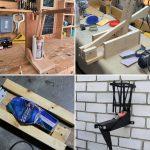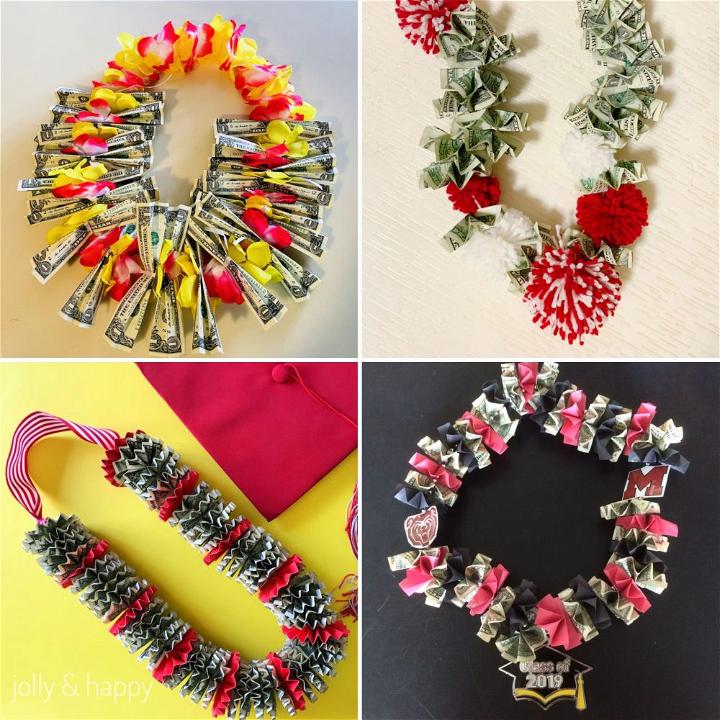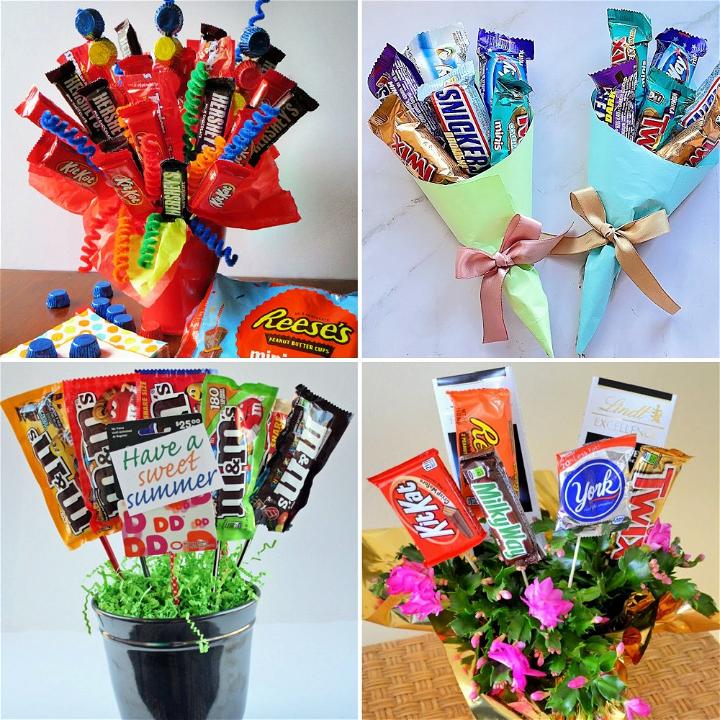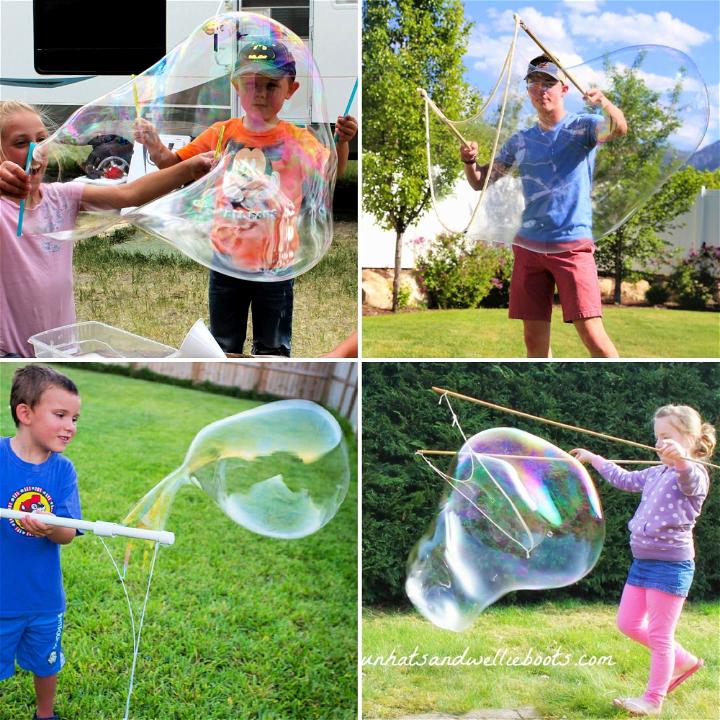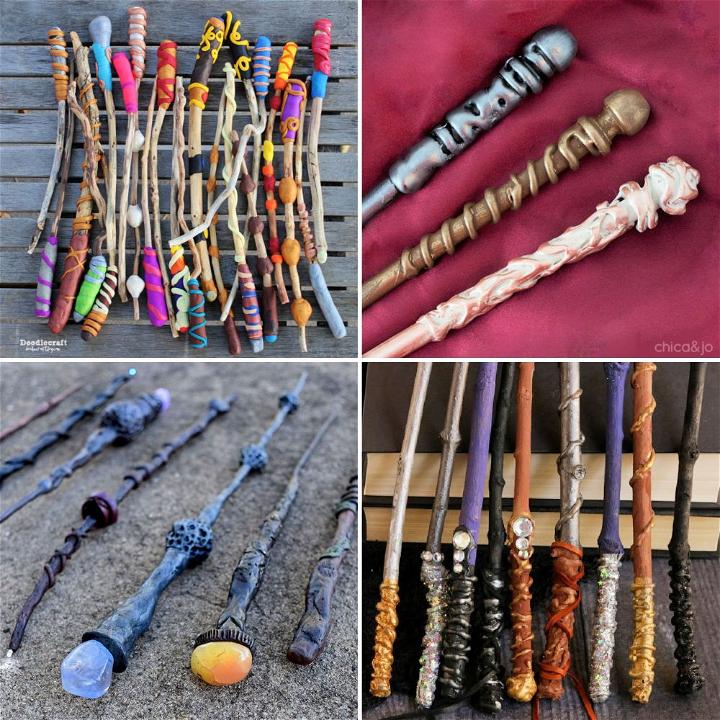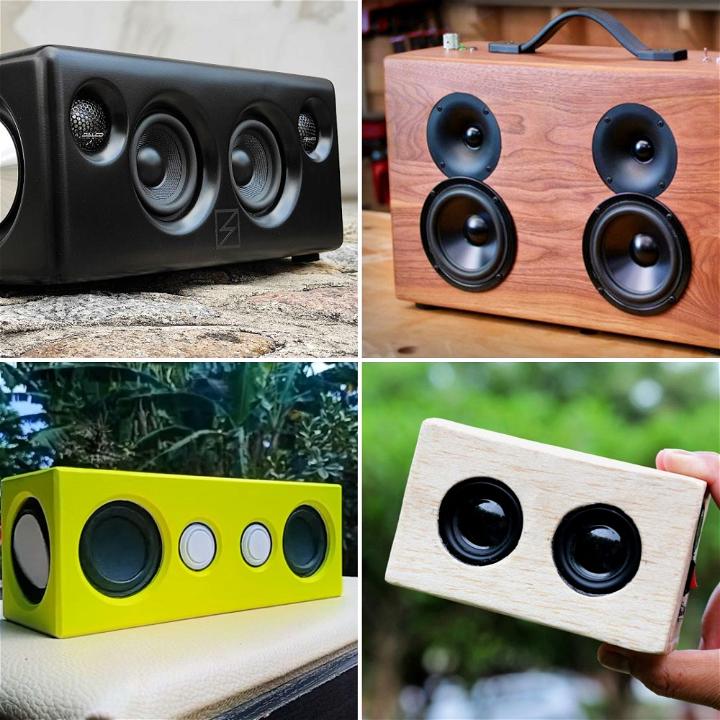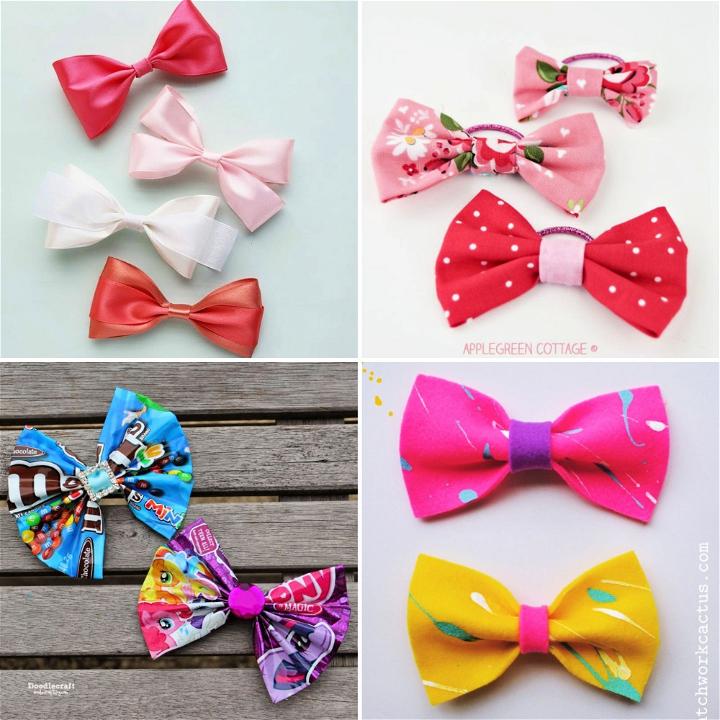Terrariums are fascinating ecosystems encased in glass, offering a glimpse into the natural world from the comfort of your home. They are not only decorative but also serve as a testament to the resilience and adaptability of plants.
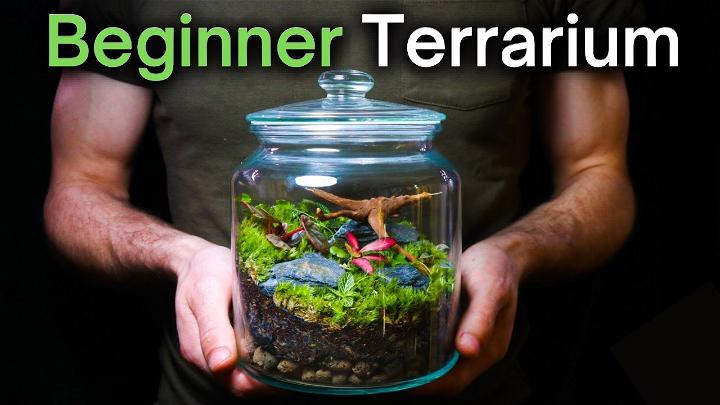
The Origins of Terrariums
The concept of the terrarium began with a serendipitous discovery by Nathaniel Bagshaw Ward in 1842. Ward, a botanist, noticed a fern spore growing in a sealed jar, which led to the creation of the first terrarium, known as the Wardian case. This accidental invention revolutionized the way plants were transported globally, particularly during the Victorian era, when terrariums became a symbol of elegance and curiosity.
Why Have a Terrarium?
Terrariums are more than just ornamental. They offer several benefits that enhance both your living space and well-being:
- Air Purification: Plants in terrariums contribute to cleaner air by absorbing toxins and emitting oxygen.
- Educational Value: They serve as a living lesson in botany and ecology, demonstrating the water cycle and plant growth in a controlled environment.
- Therapeutic Qualities: The act of making and maintaining a terrarium can be a calming and mindful experience.
- Aesthetic Appeal: Terrariums add a touch of greenery and nature to any interior setting, complementing various design styles.
Adding a terrarium brings nature into your space, making beautiful art that purifies the air and promotes peace. Terrariums are a great addition to any home, for plant experts or beginners.
How to Make a Terrarium - Step by Step Instructions
Make a terrarium with this guide to bring nature into your home. Steps include selecting a container and maintaining the mini-ecosystem. Craft a thriving terrarium by following these instructions.
Choosing the Right Container
Begin by selecting an appropriate container for your terrarium. Options range from glass jars and bottles to more elaborate containers with lids. For beginners, it's recommended to choose a container that is easy to work with and has a wide opening. This simplifies the process of adding materials and plants. A glass cookie jar or a large mason jar are excellent choices due to their size, shape, and the fact they come with a lid which is useful for maintaining humidity levels.
Making the Drainage Layer
- Start by adding a layer of small stones or pebbles at the bottom of your container. This layer ensures proper drainage, preventing water from pooling at the roots of your plants.
- Ideal materials for this layer include pea gravel, leca balls, or stones found outdoors. Aim for a thickness of about 2-3 centimeters.
Installing the Substrate Barrier
- Place a piece of mesh or fine screen on top of the drainage layer. This prevents soil from trickling down into the stones while allowing water to pass through.
- Cut the mesh to fit the inside of your container. It doesn't need to be perfect, but ensure it covers the stones entirely.
Preparing the Substrate
- Mix together a soil medium that promotes healthy plant growth and retains moisture. A balanced mix includes one part cocoa fiber, two parts sphagnum moss, and smaller portions of orchid bark, charcoal, and worm castings.
- Hydrate the cocoa fiber and combine all ingredients thoroughly. This substrate should support a wide variety of plants and help maintain the terrarium's mini ecosystem.
Adding the Substrate
- Pour a generous amount of your substrate mix over the mesh layer. Use enough soil to support your plants but leave room at the top for plant growth.
- Make a slope with the substrate for visual depth and to support various plant life at different heights.
Designing the Hardscape
- Select rocks, wood pieces, or even sculptures to add structure to your terrarium. These elements can serve as focal points or provide support for climbing plants.
- Arrange these materials creatively but ensure they do not take up too much space required for plant growth.
Planting
- Choose small plants that thrive in humid, low-light conditions. Think ferns, mosses, and shade-loving plants.
- When planting, start with the largest plants and place them towards the back to make a sense of depth.
- Use tweezers or a small shovel to dig tiny holes in the substrate for planting. Gently press the plants into the soil.
Adding Moss
- Select a type of moss that complements your plant selection. Moss adds texture and helps maintain humidity in the terrarium.
- Before planting the moss, remove any debris and trim the base. Place the moss on top of the substrate and gently press down to secure it.
Introducing Beneficial Microfauna
- Consider adding springtails to your terrarium. These tiny insects help break down decay and prevent mold growth, contributing to the health of your ecosystem.
Watering Your Terrarium
- Mist your terrarium lightly, ensuring the substrate is moist but not waterlogged. Overwatering is a common mistake; it's better to under-water than over-water.
- With a sealed terrarium, water will recirculate, and additional watering might only be necessary annually.
Finding the Right Light
- Place your terrarium in a location with bright, indirect sunlight. Avoid direct sun exposure to prevent overheating.
- Alternatively, use an LED grow light to provide consistent light, setting it to a 12-hour cycle.
Regular Maintenance
- Open the terrarium occasionally to allow fresh air to circulate and to check on plant health.
- Remove any dead plant material promptly and adjust watering as needed based on the moisture levels inside the container.
Video Tutorial
To watch the step-by-step video tutorial on making a terrarium, check out this YouTube video.
It pairs well with this written guide, enriching your learning experience by offering visual examples of each step discussed, showing you firsthand the joy and beauty of crafting your very own terrarium.
25 DIY Terrarium Ideas to Make
Discover 25 creative DIY terrarium ideas for crafting your own mini indoor gardens. Get inspired to bring greenery into your home today!
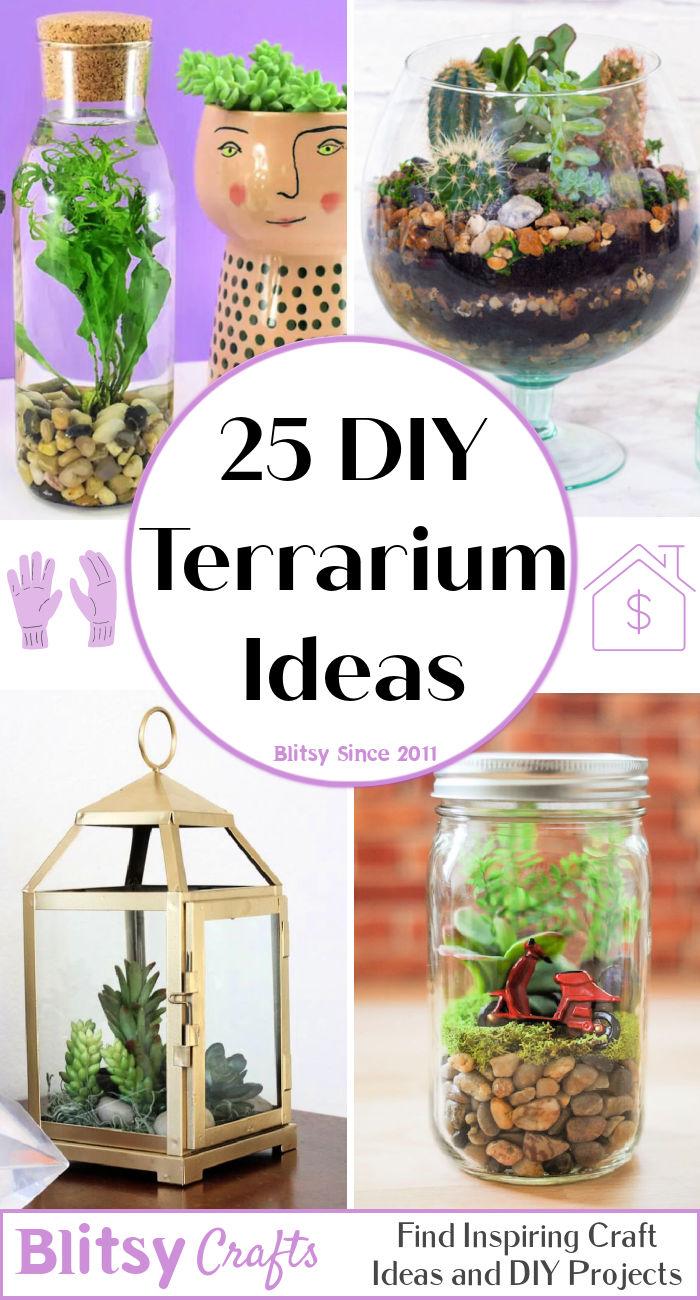
1. Faux Terrarium in 10 Minutes
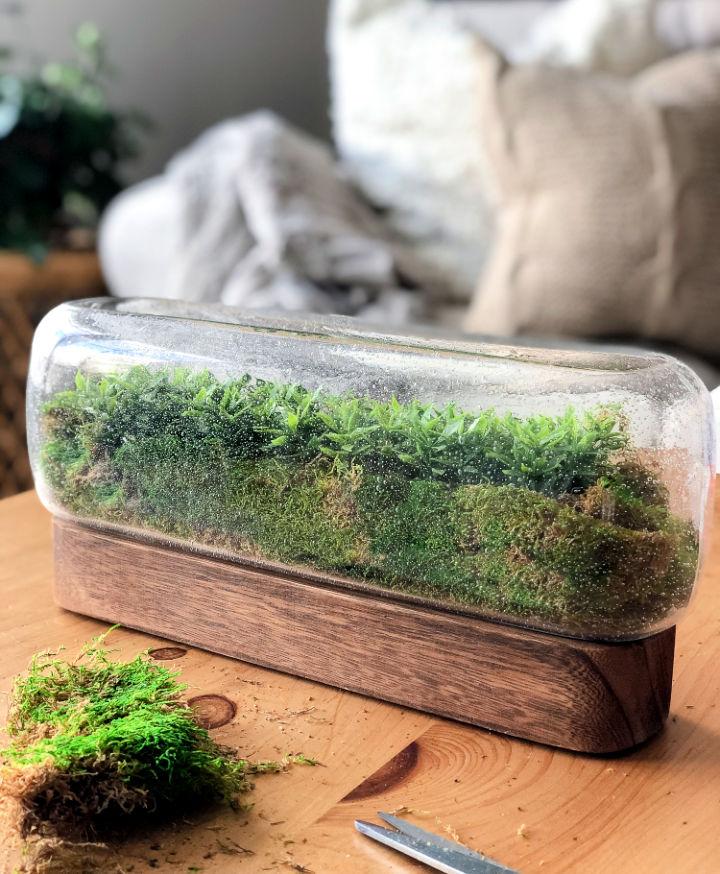
Ever wanted a touch of green without the upkeep? Making a faux terrarium is both quick and simple, providing lasting greenery that requires zero maintenance, making it perfect for those with a busy lifestyle or lacking a green thumb.
2. Geometric Succulent Terrariums Tutorial
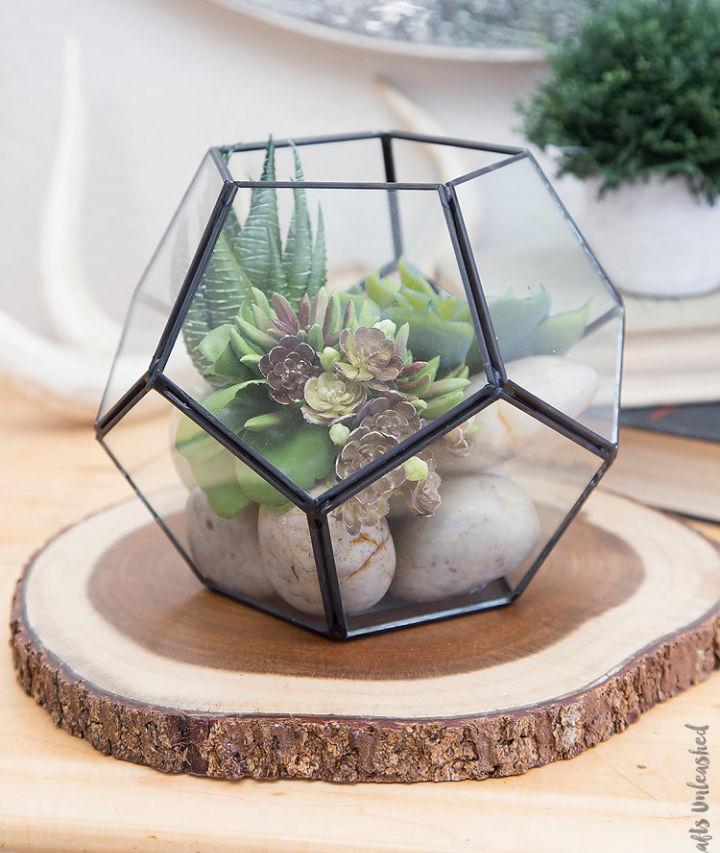
Infuse modern design into your space with geometric succulent terrariums. This eco-chic decor brings life to any room, and with succulents' easy care, it's a winning combo for adding a bit of low-maintenance nature indoors.
3. No Care Required Water Terrarium

Imagine adding a splash of aquatic life to your home with minimal effort. A no-care water terrarium captures this essence, making a self-sustaining ecosystem that brings tranquility and nature into your home without the need for regular maintenance.
4. Sand Art Terrarium for Air Plants
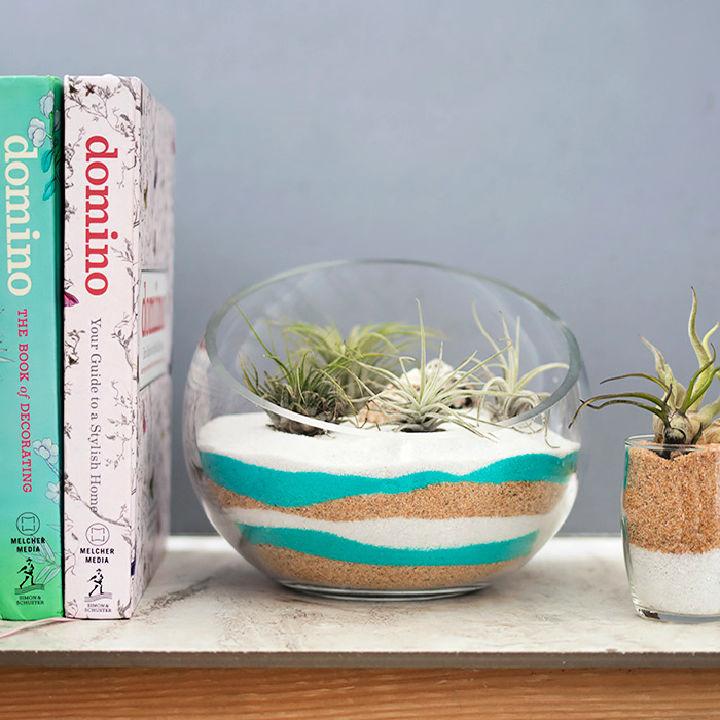
Combine the vibrancy of colored sand and the uniqueness of air plants to craft a captivating sand art terrarium. It's an artistic yet simple way to display plants, offering an eye-catching piece that breathes life and creativity into any space.
5. Make Your Own Terrarium

Discover the joy and satisfaction of making your very own terrarium. It's a fun, creative way to bring a piece of the outside world into your home, offering a personalized touch of nature that you can proudly display.
6. How to Make Terrariums
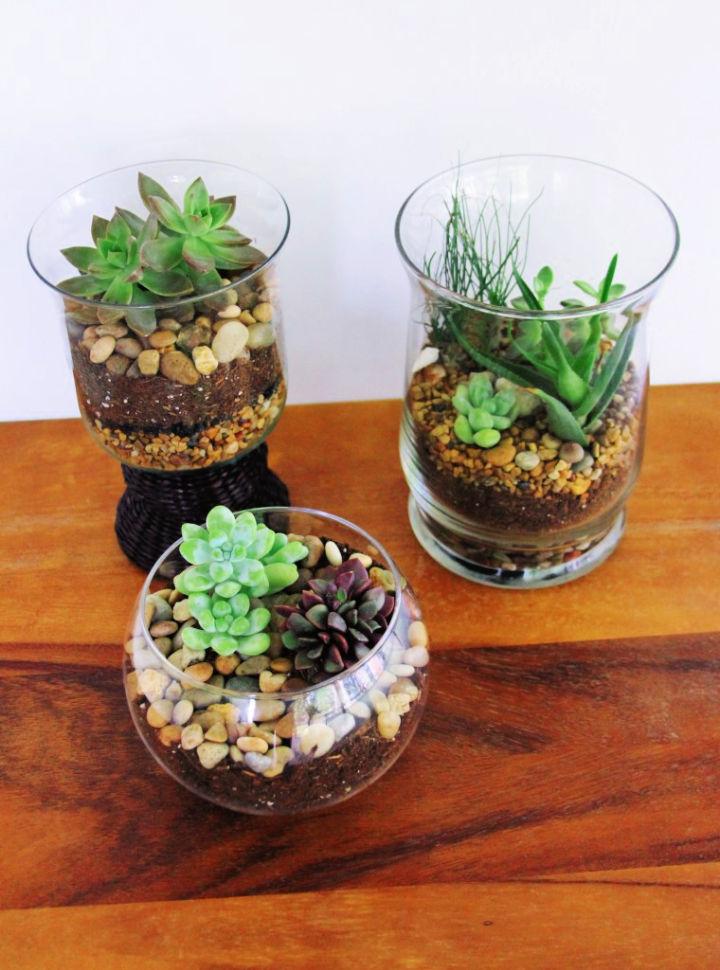
Making terrariums is like crafting your miniature ecosystem. It's an engaging project that allows you to experiment with different plants and designs, making a unique, low-maintenance green space that adds a tranquil vibe to your environment.
7. Easy DIY Copper Geo Terrariums
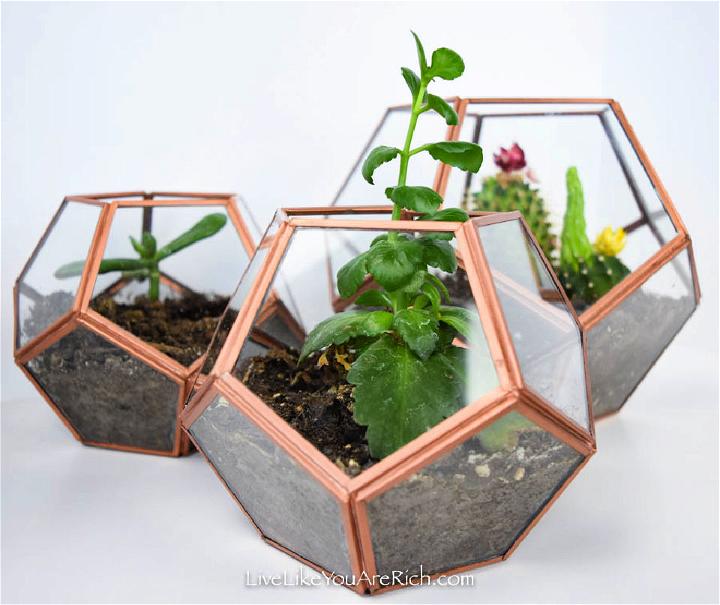
Elevate your decor with the sleek, modern look of DIY copper geo terrariums. This project combines the timeless elegance of copper with geometric shapes, offering a stylish home for your plants that looks much more complicated than it really is.
8. Hanging Lightbulb Terrarium
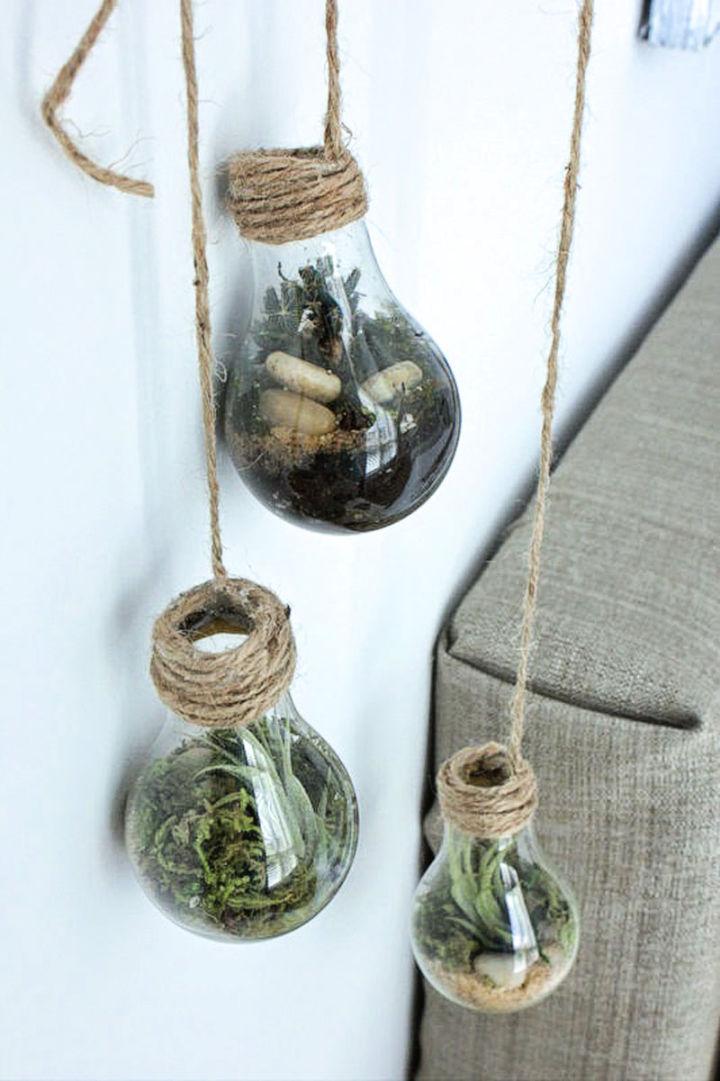
Repurpose old lightbulbs into charming hanging terrariums. It's a creative and eco-friendly way to upcycle, turning what would be waste into whimsical air plant holders that double as fascinating and unique decorative pieces.
9. Easy and Cheap DIY Terrarium
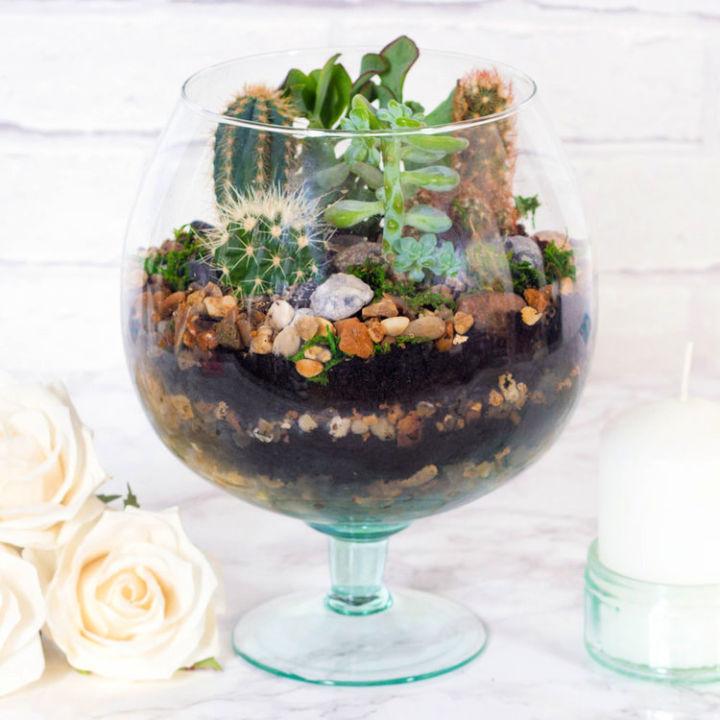
Dive into the world of terrarium-making without breaking the bank. With a few simple, affordable supplies, you can craft a lovely mini garden that brings a piece of the outdoors inside, adding a refreshing touch to your home.
10. DIY Terrarium from Recycled Materials
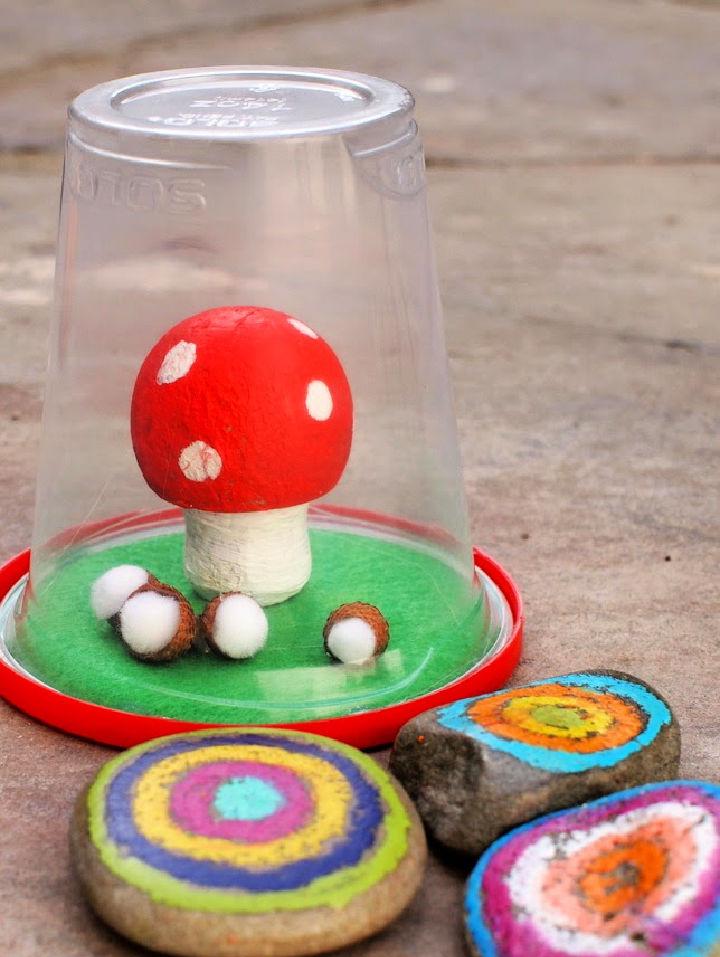
Embrace sustainability by making a terrarium using recycled materials. This environmentally friendly project promotes creativity and conservation, allowing you to transform everyday items into a beautiful habitat for plants, combining eco-conscious living with stylish, green decor.
11. How to Build Terrarium
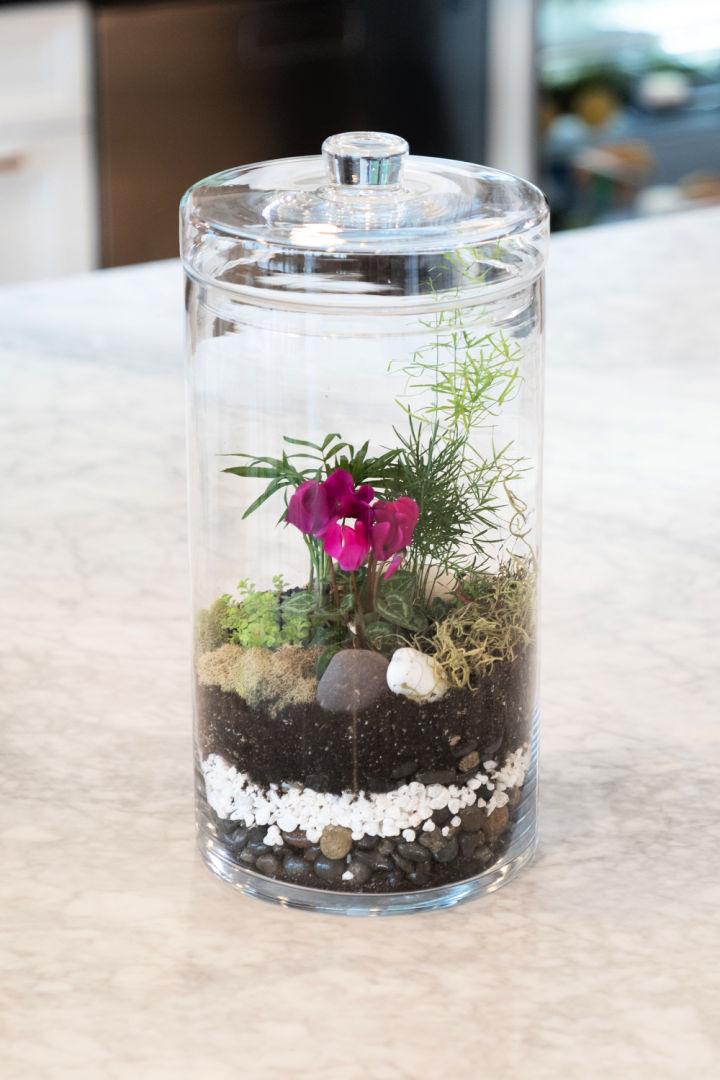
Building a terrarium is akin to painting a landscape but in 3-D. Carefully layering rocks, soil, and plants, you can make a thriving closed ecosystem. This project is not only therapeutic but also enhances any space with a touch of nature.
12. Making a Terrarium
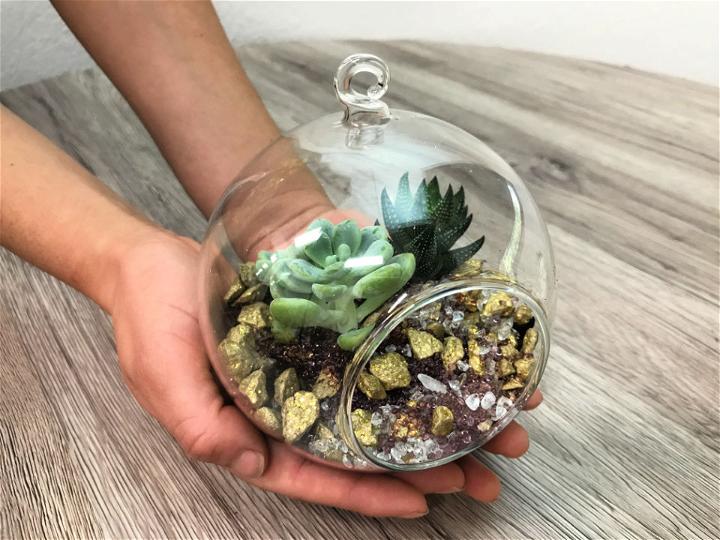
Embarking on making a terrarium introduces you to the world of miniature gardening. Selecting tiny plants, stones, and perhaps some decor pieces lets you craft a personalized green space. It's a satisfying activity that connects you with nature on a small scale.
13. Closed Lid Terrarium for Under $12
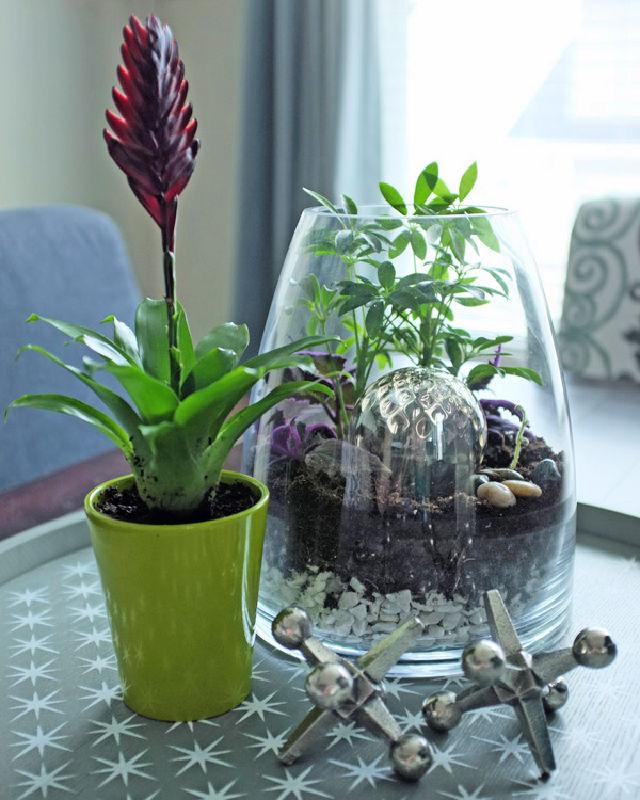
Making a closed lid terrarium for under $12 shows that bringing a bit of the outdoors inside doesn't have to break the bank. Thrifty finds and budget-friendly materials can come together to cultivate a self-sustaining snippet of nature's beauty.
14. Make a Kid Friendly Terrarium
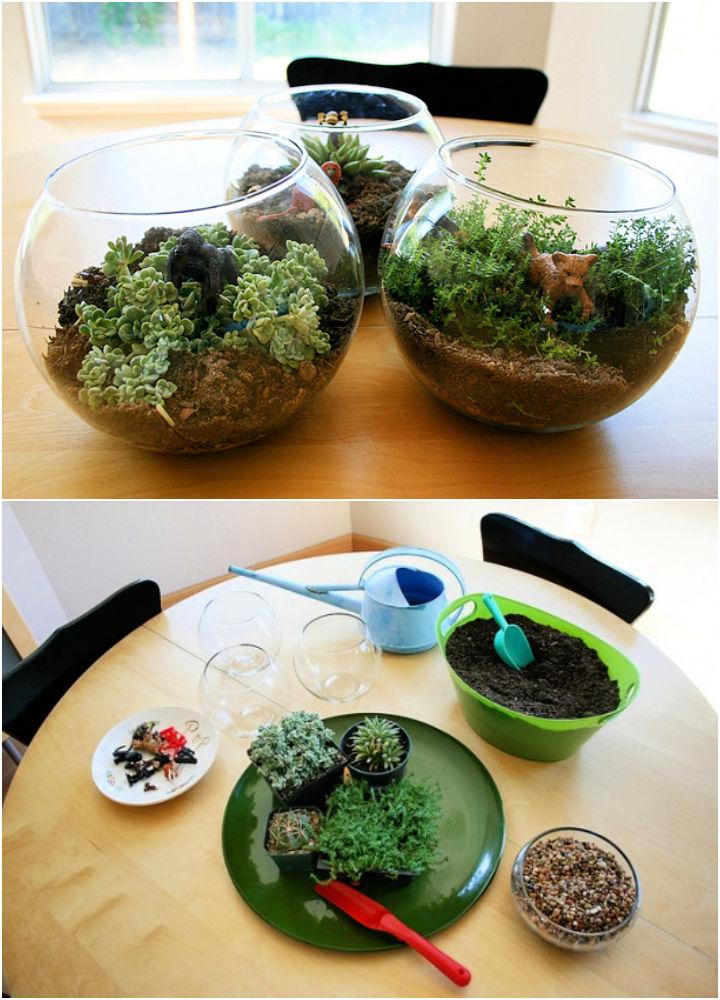
A kid-friendly terrarium is a fantastic way to introduce children to gardening. Choose robust plants and shatterproof containers for a stress-free and educational crafting session. It's an engaging way to teach responsibility and the basics of ecosystems.
15. Pretty DIY Lantern Terrarium
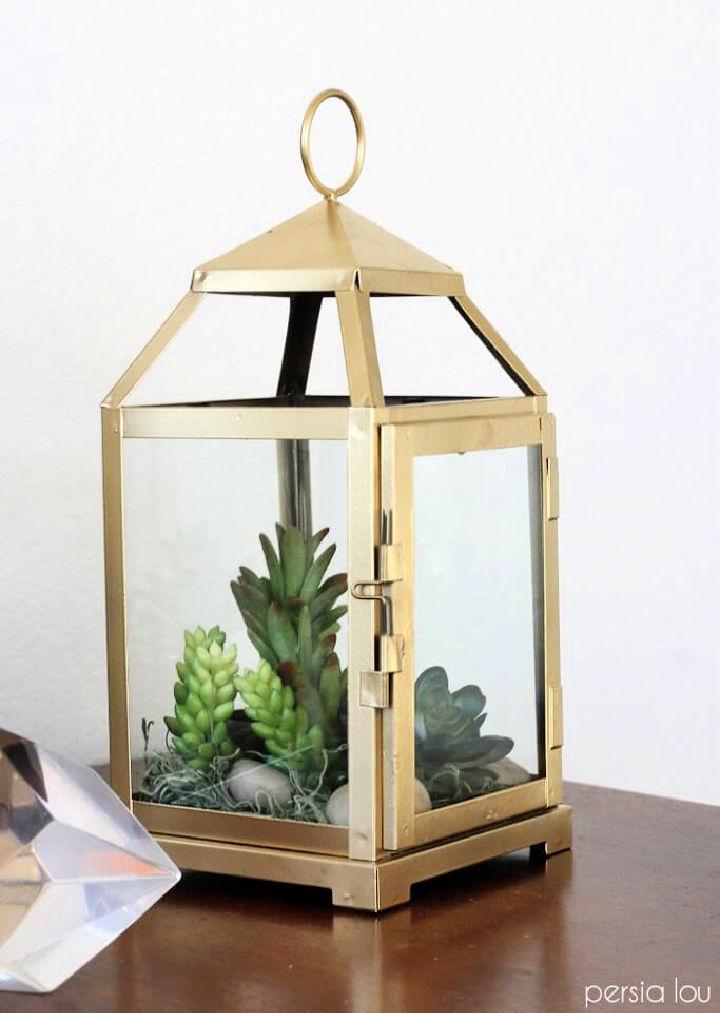
Transforming a lantern into a terrarium blends functionality with aesthetic beauty. This approach allows you to upcycle unused lanterns, making eye-catching displays. It's an inventive and stylish way to incorporate greenery into your living spaces.
16. Easy to Make Terrarium
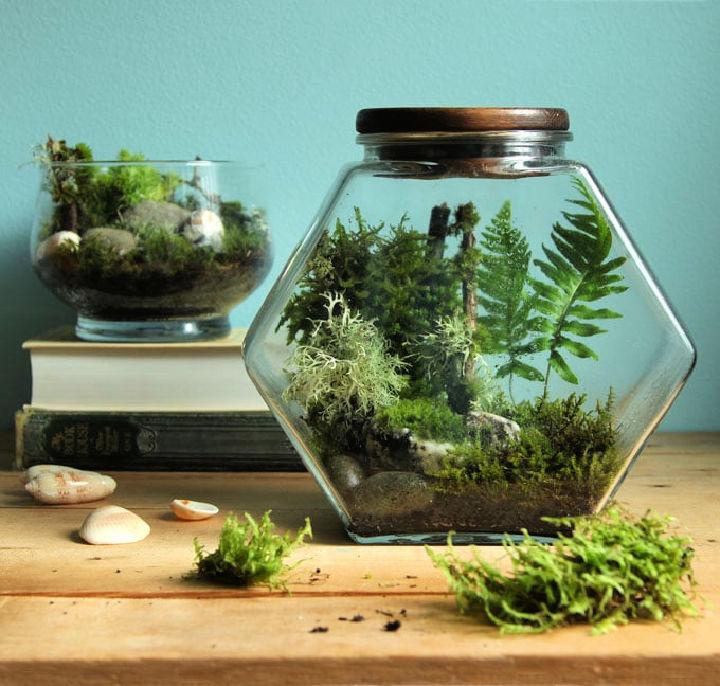
An easy-to-make terrarium invites beginners into gardening without overwhelming them. Simple materials and low-maintenance plants ensure success, delivering gratification and a beautiful, living decor piece. It's an approachable project for those looking to spruce up their interiors with greenery.
17. Dinosaur Terrarium for Kids
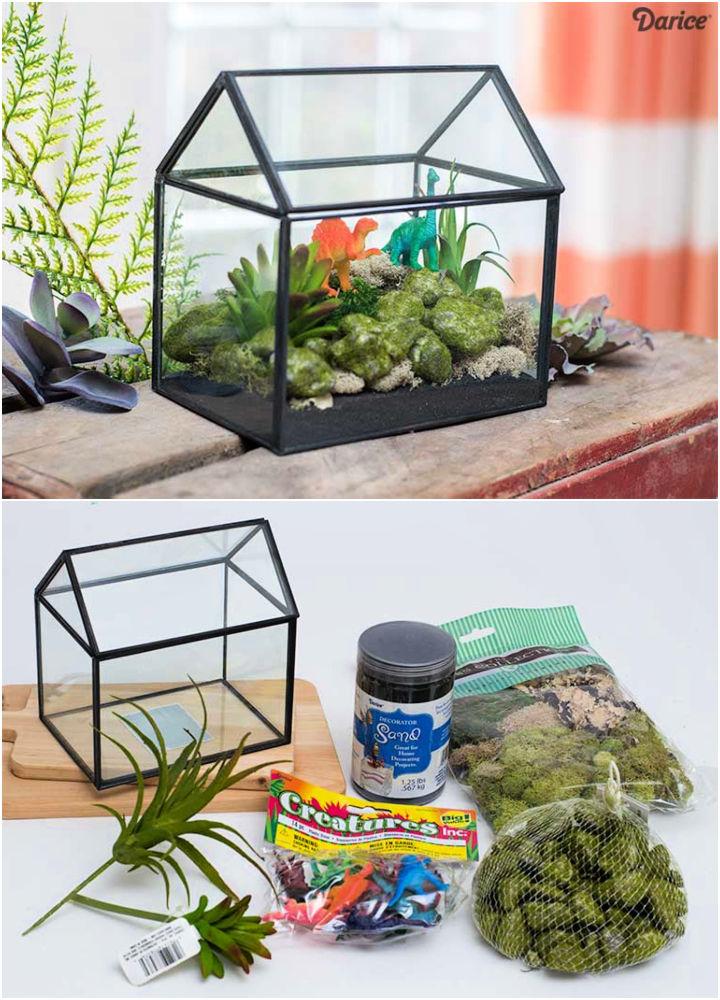
A dinosaur terrarium is a delightful project for kids, combining their love for dinosaurs with plants. This imaginative activity sparks creativity and provides a playful, prehistoric touch to their room. It's a fun way to merge playtime with a touch of green.
18. Mini Indoor Garden with Succulent Terrarium
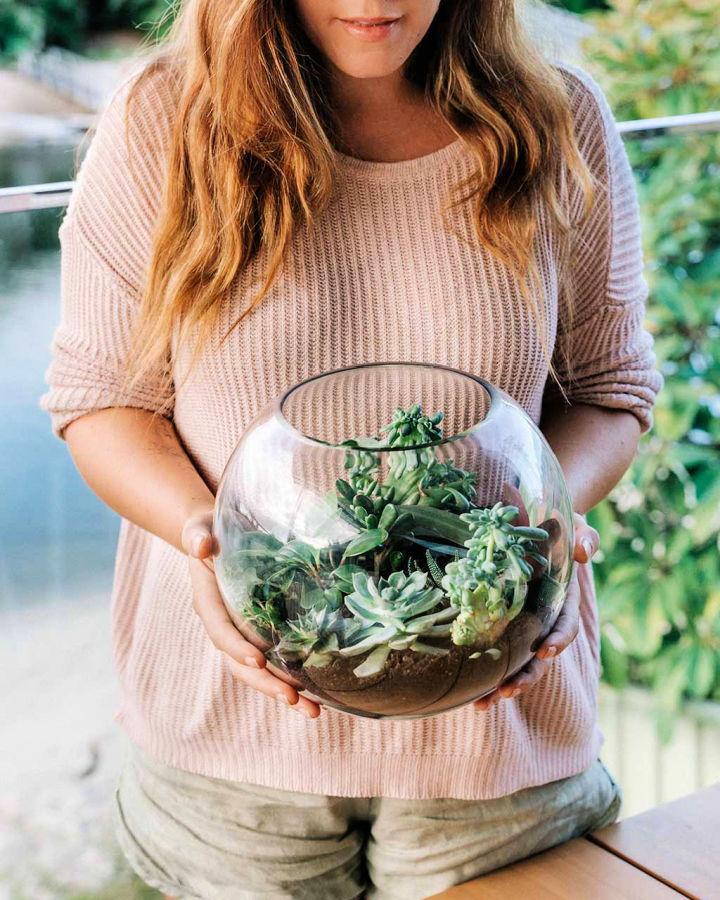
Make a mini indoor garden with a succulent terrarium brings resilient beauty to your space. Succulents are forgiving plants, making this a low-maintenance garden perfect for busy or forgetful gardeners. It's a compact, yet striking way to green your indoor environment.
19. DIY Stained Glass Terrarium
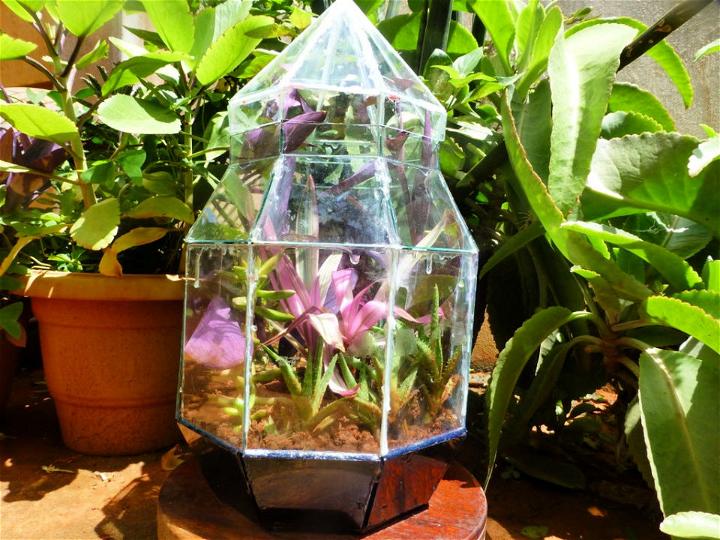
Making a DIY stained glass terrarium adds a splash of color to your indoor gardening. The stained glass casts beautiful light patterns, highlighting your plants in an extraordinary way. It's a vibrant and artistic approach to terrariums, blending art with nature.
20. $23 Succulent and Cactus Terrarium
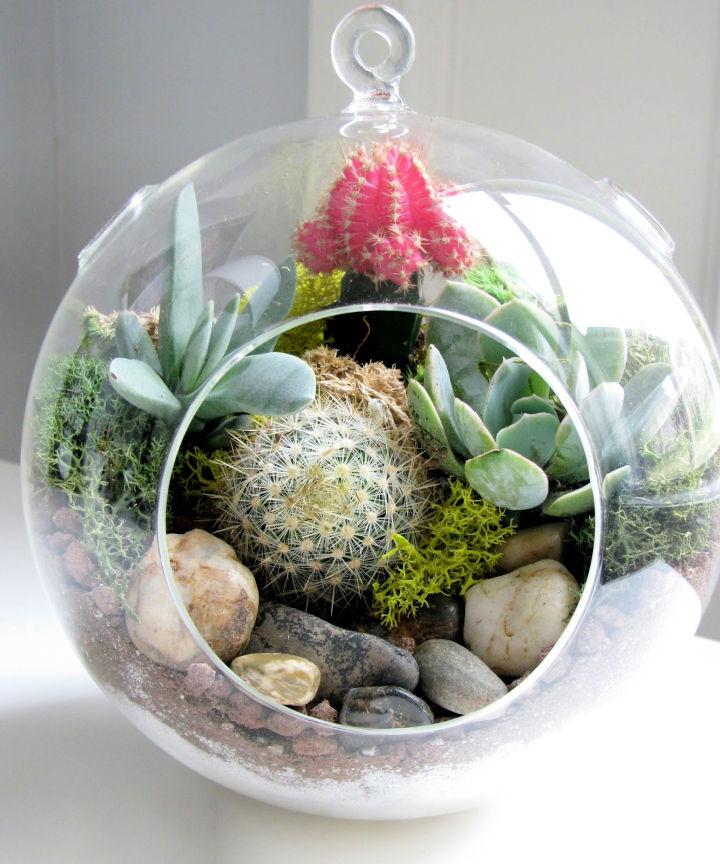
With $23, you can assemble a succulent and cactus terrarium, offering a piece of the desert's rugged beauty. This budget-friendly project is not only affordable but also introduces you to the fascinating world of succulents and cacti, known for their unique shapes and resilience.
21. Simple DIY Beach Theme Terrarium
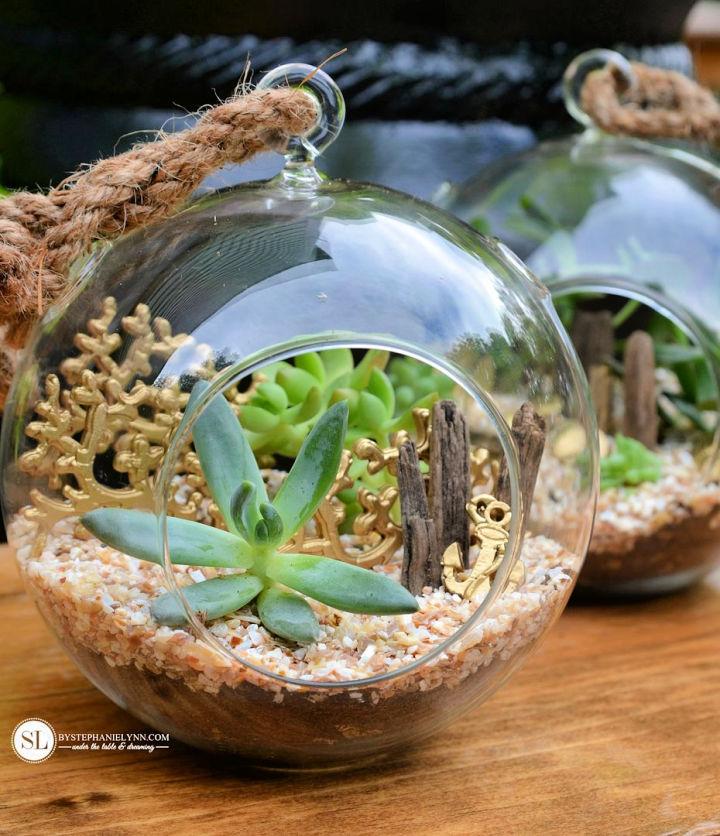
Bring the serenity of the seaside into your home with a DIY beach-themed terrarium. It's a delightful blend of sand, shells, and small plants, making a miniature coastal escape. This easy project adds a touch of summer all year round, offering a peaceful visual delight.
22. Homemade Moss Terrarium
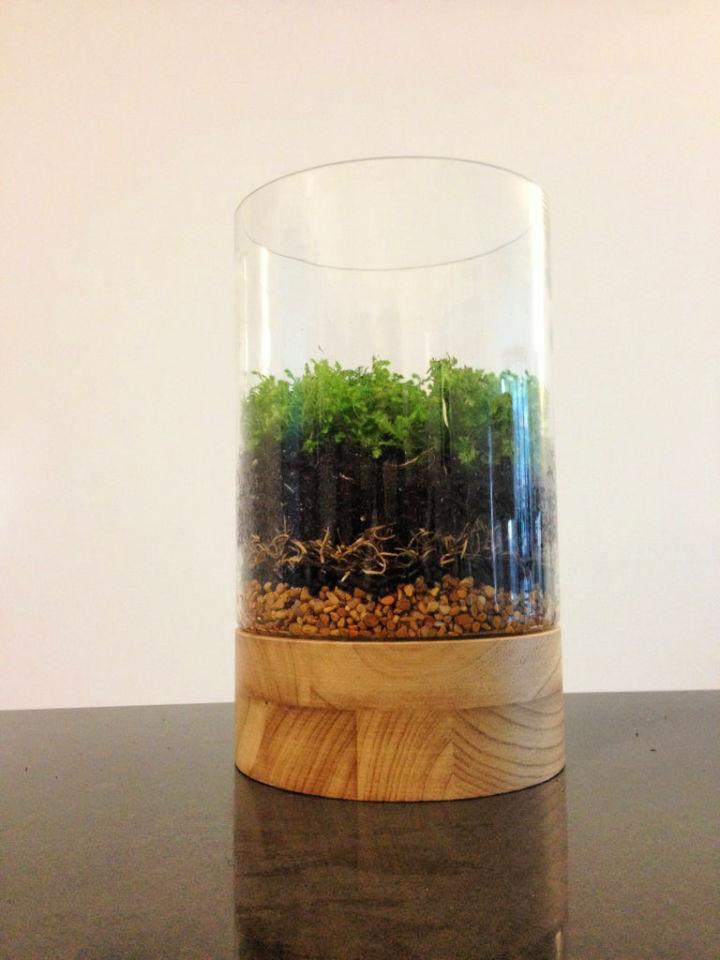
A homemade moss terrarium invites a piece of the forest into your living space. Lush and low-maintenance, it's a charming way to incorporate greenery. The vibrant moss makes a mini woodland vibe, perfect for adding a natural touch and a bit of tranquility to your surroundings.
23. Mason Jar Terrarium for Kids
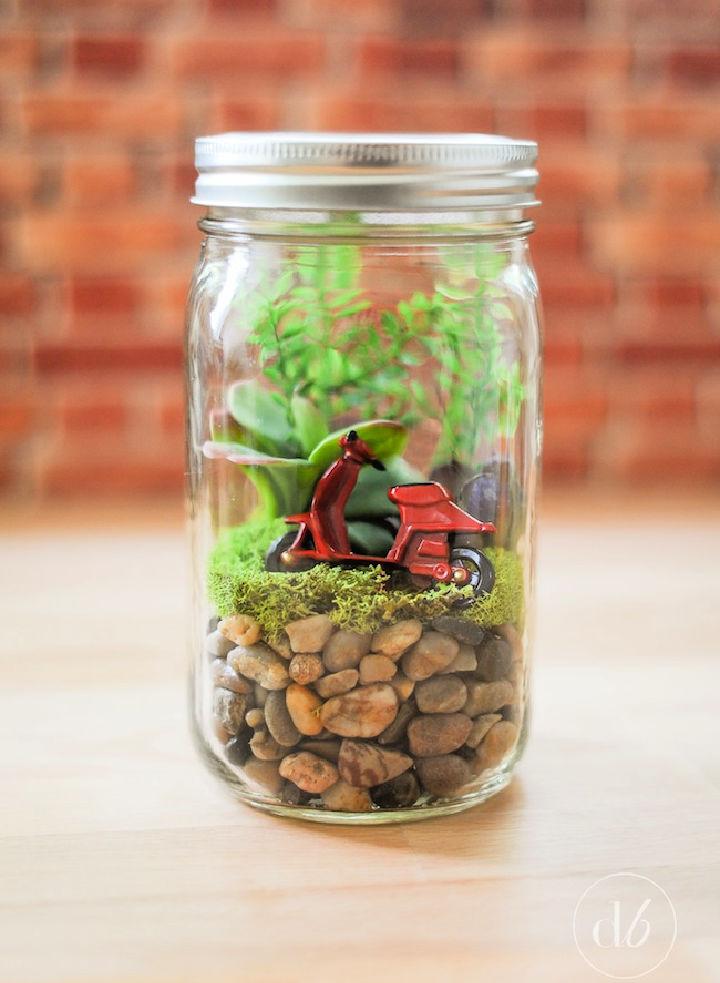
Get the little ones involved in green projects with a Mason jar terrarium. It's a fantastic, hands-on way to teach them about ecosystems. This miniature garden encased in glass can spark creativity and responsibility in kids, making it a delightful family bonding activity.
24. DIY Glass Jar Indoor Terrarium
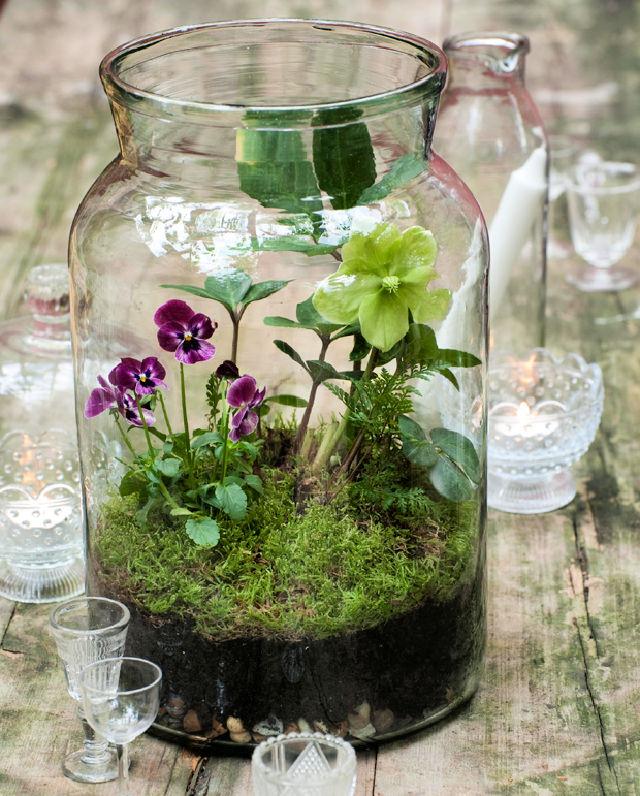
Transform a simple glass jar into an enchanting indoor terrarium. This DIY project is a perfect way to repurpose jars, combining them with a variety of plants to brighten any room. It's a stylish, sustainable decor option that adds a burst of life to your indoor space.
25. Bearded Dragon Terrarium in Enclosure
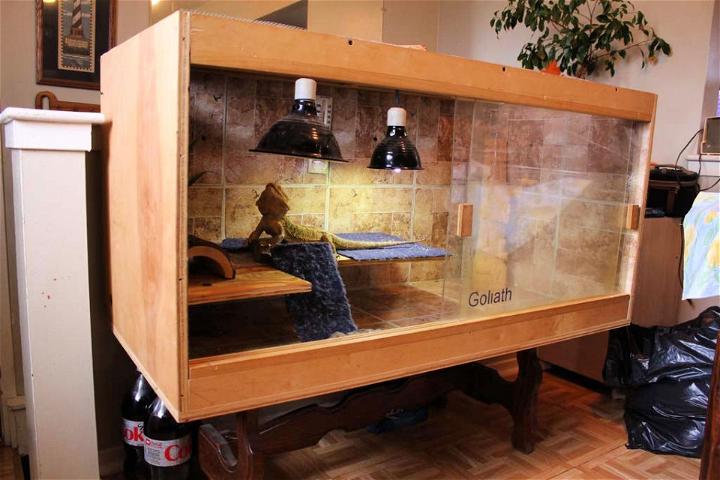
Designing a terrarium for a bearded dragon involves making a comfortable and stimulating environment in an enclosure. This setup mirrors their natural habitat, featuring warm areas for basking and cooler spots to retreat. It's crucial for the well-being of your scaly friend, ensuring they're happy and healthy.
Conclusion:
In conclusion, making a terrarium is a fun and creative way to bring nature indoors. By following these simple steps and using the right materials, you can easily make a beautiful terrarium to enhance your home decor. Remember to choose the right plants, soil, and container to ensure the success of your terrarium project.



